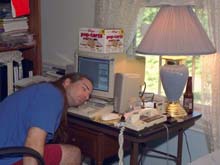 You’re self-employed.
You’re self-employed.
You work out of your home.
You’re the only person at your company.
So, how do you convince yourself that you actually have a real job?
Good question.
As a Professional Fake Employee for the past five years, I’ve discovered many secrets for doing so. Let’s take a look at eight “GETS” for self-employed success:
GET UP! An hour earlier. Doing so will instill a sense of urgency and importance at the onset of your day.
GET DRESSED! After your shower, don’t crawl back into your PJ’s. Instead, dress as if you had an important meeting that day. Put on your business casual best, a three-piece suit or whatever works for you. Just remember, act as if you were the person you’re trying to become. By looking great, you’ll start to feel great.
GET OUT! Now that you look like you actually have a real job, grab your briefcase, laptop and other materials … and get out of the house. Announce to your spouse, kids, sweetie or pets, “Well, I’m off to work!”
GET A SPOT! Of course, you’re not actually going to work … yet. But, by getting up an hour earlier than usual, you’ve earned some “prep” time. So, head over to your local coffee shop. Settle down with a drink and perhaps some breakfast.
Do not read the newspaper. It’s negative, it’s crap.
Instead, use this time as your Daily Appointment with Yourself. Read positive materials, review your goals and affirmations, listen to positive music, meditate, whatever works to set the stage for your day.
GET CRACKIN! Now that you look and feel important, it’s time to “officially” start work. Leave the coffee shop and head over to the office, aka, your living room. Take a look at your goals, tasks, appointments and to-do’s for the day. Get started on whatever is most urgent.
GET VERBIAGE! As you email clients and talk on the phone with prospects, watch your words.
*Don’t say, “I’ll be at home all day.” Instead, say, “I’ll be in the office till five.”
*Don’t say, “My policy is…” Instead, say, “My company policy is.”
There’s a big difference! Also, be careful how you use the Royal We. The point of verbiage is not to refer to yourself or your job in a misleading way. Instead, challenge yourself to reframe your verbiage in an honest, authentic tone that convinces both you AND your clients that’s you’re not actually running a business in your parents’ basement while two annoying dogs yap at the mailman all day. (Hypothetically)
GET COLLEAGUES! Unfortunately, words like “coworkers” and “fellow employees” don’t exist in your self-employed vocabulary. So, focus on establishing relationships with colleagues. Find like-minded professionals who work similar Fake Jobs in similar Fake Industries as you. Force yourself to get out of the house at least three times a week for lunches, brainstorming sessions or lead sharing meetings.
GET SUPPLIES! Just because you’re the sole employee at your company and spend most of your days sitting in a La-Z-Boy recliner in your underwear, checking email via Wifi while you watch Sportscenter and play fetch with your Cocker Spaniel named Ginger (hypothetically), that doesn’t mean you can’t project a professional image.
Equip yourself with the necessary supplies: stationary, PO box, a dedicated office and fax line and an email account that isn’t ([email protected] or [email protected]) NOTE: an unprofessional email is the first dead giveaway of someone who doesn’t have a real job!
All kidding aside, these eight “GETS” of self-employed success revolve around one key idea: attitude.
Not because “attitude is everything,” but because attitude underscore everything.
Ultimately, your challenge is to think, act and present yourself in a way consistent with the person you’re striving to become.
Because eventually – if you maintain the right attitude – you will actually become that person!
And that’s the best way to convince yourself that you actually have a real job.
Now if you’ll excuse me, there’s a Cocker Spaniel waiting to play fetch with me.
LET ME ASK YA THIS…
How do you convince yourself that you actually have a real job?
LET ME SUGGEST THIS…
Share your self-employed secrets here!
* * * *
Scott Ginsberg
That Guy with the Nametag
www.hellomynameisscott.com
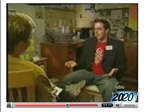 Are you the luckiest person you know?
Are you the luckiest person you know?
Watch Scott’s interview on 20/20!

 ATTENTION ANYONE UNDER 25!
ATTENTION ANYONE UNDER 25!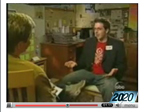 Are you the luckiest person you know?
Are you the luckiest person you know? Today is day 2,443.
Today is day 2,443.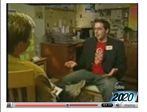 Are you the luckiest person you know?
Are you the luckiest person you know? (I’m in Leysin, Switzerland for the next two weeks working with YPO, and I thought this post was appropriate…)
(I’m in Leysin, Switzerland for the next two weeks working with YPO, and I thought this post was appropriate…)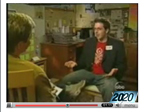 Are you the luckiest person you know?
Are you the luckiest person you know? The other day one of my audience members asked me, “What do you like LEAST about your job?”
The other day one of my audience members asked me, “What do you like LEAST about your job?”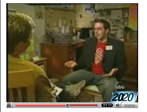 Are you the luckiest person you know?
Are you the luckiest person you know? You’re the youngest person in your office.
You’re the youngest person in your office.  * * * *
* * * * The other day my friend Jess asked me, “How did you learn so much at such a young age?”
The other day my friend Jess asked me, “How did you learn so much at such a young age?” My Grandpa Frank always told me, “A chicken ain’t nuthin’ but a bird.”
My Grandpa Frank always told me, “A chicken ain’t nuthin’ but a bird.” (Special thanks to
(Special thanks to  Absolutely the best business/life decision I’ve made in the past few years was to start hanging out with people who are smarter than me.
Absolutely the best business/life decision I’ve made in the past few years was to start hanging out with people who are smarter than me.